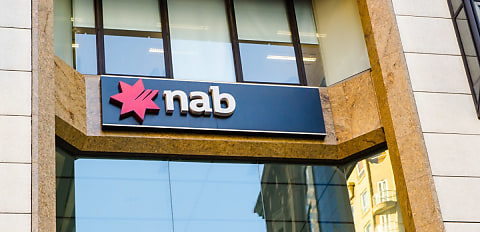The old rate for a three-year 30 per cent plus deposit was 6.59 per cent and for a three-year less than 30 per cent deposit was 6.64 per cent. Now, both have been slashed by 0.6 per cent, bringing the total to 5.99 per cent and 6.04 per cent, respectively.
This makes NAB the first of the big four to cut rates and outrate ‘in the fives’. According to a statement from RateCity, the decision was “designed to appeal to customers worried about the prospect of future cash rate rises.”
“This is a strategic move from NAB in a bid to test whether there’s any appetite among borrowers to revert back to fixing,” said RateCity research director Sally Tindall.
“A big bank fixed rate that starts with a ‘5’ is likely to turn at least a few heads, particularly among those worried about the prospect of further cash rate hikes.”
Fixed rates have seen a massive decline in recent years, said Tindall: “The popularity of fixed rates peaked back in July 2021 when 46 per cent of new and refinanced loans opted for a fixed rate, according to the ABS. This now sits at just 1.7 per cent in the most recent data.
“It’s hard to see people flocking back to fixed rates, but this rate under 6 per cent from NAB is designed to test this.”
Still, fixing for a three-year period is a substantial financial commitment, especially with the uncertainty of cash rate changes.
“Governor Bullock has said the cash rate is in ‘restrictive territory’, which means it’s likely to come down at some point, however, not even the RBA knows exactly when that will be, by how much, and whether we’re likely to see more hikes before then,” said Tindall.
“For those looking for some relief from having to follow the RBA’s every thought, a fixed rate could be the certainty they need, even if they end up having to pay more for that peace of mind.”
However, whether choosing fixed or variable, it’s always a gamble: “The RateCity.com.au database shows the lowest one-year fixed rate is sitting at 5.74 per cent, while the lowest variable is just 0.01 percentage point higher at 5.75 per cent,” Tindall said.
“Right now, there’s barely a crack of light between the two rates, but a couple of cash rate changes either way would change this equation entirely. Borrowers considering a fixed rate should know these loans are a lot less flexible, with caps on extra repayments and typically no access to an offset account.
“Short-term fixed rates can also be a lot more work as you’ll need to renegotiate your loan, or potentially refinance at the end of the fixed rate period. The last thing you want to do is roll over onto a highly uncompetitive variable rate after the fixed rate term expires.”
[Related: Consumers expecting the worst as rate rise worries see abrupt increase]

